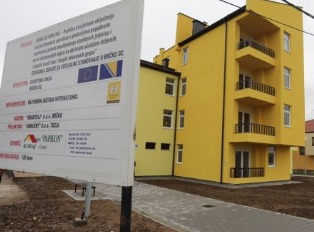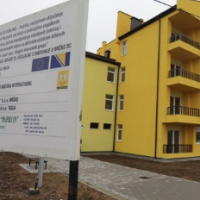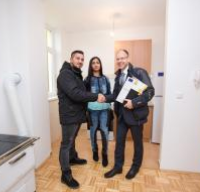Aside from the physical restoration of facilities, houses, and infrastructure, the post-war period in BiH marked the beginning of the renewal of society as well. Building a country does not just mean building houses, and establishing government institutions.
In order for any society to develop, it is necessary for organisations representing different interest groups to play a fully functional role. These may be organisations representing professions, hobbies, gender, sexual orientation, and ethnicity. Such groups are known as civil society organisations, or the non-governmental sector.
During the 20th century and, particularly in the second half of the 1990s, there was a significant expansion of civil society organisations and their activities in BiH. Until that time, the greatest number of such organisations represented workers associations, operating within a single-party system. The significant growth of the civil sector during this time was fuelled by a need to improve the effectiveness and efficiency of this sector to act as a government corrector, highlighting possible failures, while at the same time advocating for the needs and interests of various groups, and providing concrete solutions to various social problems and anomalies.
According to estimates, there are currently over 22 000 civil society organisations in Bosnia and Herzegovina, or 3.42 NGOs per 1,000 inhabitants. It is difficult to establish the precise number of these organisations as while some are constantly being closed down, others are being newly registered. Additionally, in the context of the four levels of government in BiH, many of these organisations operate in only one or several municipalities, while others are registered and active at a countrywide level.
With this number of civil society organisations, BiH can be compared to EU countries from the lower end of the table of NGOs per 1,000 inhabitants, such as the Czech Republic, which has 3.49 NGOs per 1,000 inhabitants. The leaders among EU countries are Finland with 20.5 and Austria with 11.2 NGOs per 1,000 inhabitants, while our closest EU neighbour Croatia is in a relatively good position with 4.56 NGOs per 1,000 inhabitants.
Success stories
On a cold winter evening, Eldina Aljić’s son sits on the floor of his warm room, playing with his toys. Eldina prepares snacks, while her husband brings firewood, so they can spend another family evening
in their warm apartment, even though the outside temperature has dropped below zero. In a little while, the Aljić family will enjoy a movie night.
Until just a few months ago, this was all just a dream, an almost unreachable one. Eldina and her husband would not have believed that they could spend this winter in their own apartment, or that their son would have his very own room. However, their lives suddenly changed, their distant dreams became reality, and the poor conditions in which they lived became a thing of the past.
Previously, Eldina and her family had lived in her parent’s house but on October 24th 2017 Eldina and her family’s lives were transformed, as were those of 17 other Roma families in Brčko District, Bosnia And Herzegovina: a building with 18 housing units was built within the Roma Action II Project that is financed by the European Union in the amount of €2.5 million, and co-financed by the local authorities.
This project, which provides housing for a total of 140 Roma families, was implemented in nine municipalities in B&H. Eldina’s family is one of many Roma families who have become residents of the brand new apartments provided by the project.
Now, Eldina and her family have their own home, providing the chance of a better future. She is fully aware of how much this EU project has improved her life, saying: “They provided us with a brighter future. Until now, I have been living with my mother and father but, as of today, my family and I have our very own apartment.”







